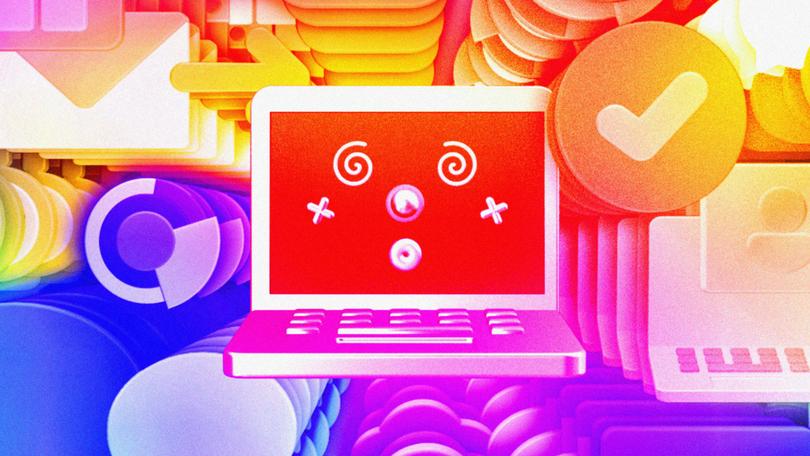The New York Times: Will artificial intelligence boost productivity? Companies sure hope so

Wendy’s menu boards. Ben & Jerry’s grocery store freezers. Abercrombie & Fitch’s marketing. Many mainstays of the American customer experience are increasingly powered by artificial intelligence.
The question is whether the technology will actually make companies more efficient.
Rapid productivity improvement is the dream for both companies and economic policymakers. If output per hour holds steady, firms must either sacrifice profits or raise prices to pay for wage increases or investment projects. But when firms figure out how to produce more per working hour, it means that they can maintain or expand profits even as they pay or invest more. Economies experiencing productivity booms can experience rapid wage gains and quick growth without as much risk of rapid inflation.
Sign up to The Nightly's newsletters.
Get the first look at the digital newspaper, curated daily stories and breaking headlines delivered to your inbox.
By continuing you agree to our Terms and Privacy Policy.But many economists and officials seem dubious that AI — especially generative AI, which is still in its infancy — has spread enough to show up in productivity data already.
Jerome Powell, the Federal Reserve chair, recently suggested that AI “may” have the potential to increase productivity growth, “but probably not in the short run.” John Williams, president of the New York Fed, has made similar remarks, specifically citing the work of Northwestern University economist Robert Gordon.
Gordon has argued that new technologies in recent years, while important, have probably not been transformative enough to give a lasting lift to productivity growth.
“The enthusiasm about large language models and ChatGPT has gone a bit overboard,” he said in an interview.
The last time productivity really picked up, in the 1990s, computer manufacturing was getting a lot more efficient at the same time that computers themselves were making everything else more efficient — allowing for a sector-spanning productivity increase. Today’s gains may be less broad, he thinks.
Other economists are more optimistic. Erik Brynjolfsson at Stanford University has bet Gordon $400 that productivity will take off this decade. His optimism is based partly on AI. He ran an experiment with it at a large call center, where it especially helped less-experienced workers, and has co-founded a company meant to teach firms how to leverage the technology.
Many companies seem to be in Brynjolfsson’s camp, hopeful that the shiny new tool will revolutionize their workplaces. Companies are using AI and generative AI for everything from writing marketing emails to helping set prices to answering employees’ human resources and legal questions.
Here are a few areas where companies say that the latest AI technology is being used in ways that could influence productivity, pulled from interviews, earnings calls and financial filings.
Got an annoying task? There’s an AI for that.
Employees spend a lot of time trying to figure out human resources-related questions. Companies have been investing in generative AI to help answer those queries more quickly.
At Walmart, the largest retailer in the United States, with 1.6 million workers, the company’s employee app has a section called “My Assistant,” which is backed by generative AI. The feature uses the technology to quickly answer questions such as “Do I have dental coverage?”; summarize meeting notes; and help write job descriptions.
Walmart rolled out the technology to its U.S. corporate workforce last year.
The retailer has been clear that the tool is meant to boost productivity. In an interview last year, Donna Morris, Walmart’s chief people officer, said one of the goals was to eliminate some mundane work so employees could focus on tasks that have more impact. It’s expected to be a “huge productivity lift” for the company, she said.

The algorithms want to sell you things.
Tony Spring, CEO of Macy’s, said the department-store chain is experimenting with AI to tailor its marketing. The company is using generative AI to write elements of emails, and is exploring ways to use the technology to add product descriptions online and to replicate images of outfits or other products for sale over new backgrounds.
“It’s certainly showing up as a tool for some colleagues to reduce workload,” Spring said in an interview.
Abercrombie & Fitch is using generative AI to help design clothes and write descriptions for its website and app. Designers use Midjourney, an AI graphics program, to help them generate images as they brainstorm clothing ideas. Workers in Abercrombie’s marketing department also use generative AI to help write the blurbs for products’ descriptions. (Employees later edit the copy.)
Samir Desai, Abercrombie & Fitch’s chief digital officer, said the technology helps speed up a laborious process, given that Abercrombie and its brands can post a couple of hundred new products on its website in a single week.
“I think right now it’s a lot of trust and belief that these are productivity enhancers, efficiency boosters,” Desai said, noting that it was difficult to quantify how much time and money was being saved. “I think we’ll start to see that manifest itself in just how much work certain teams are able to get through versus the prior years.”
AI pairs well with burgers and ice cream.
Some companies are hoping to use the latest AI technology to help match prices to demand, somewhat like the way that Uber sets prices for cars based on how many people want to ride.
Wendy’s, for instance, has floated the idea of using AI to identify slower times of the day and discount the prices of menu items on their digital boards.
The technology could also help with inventory management. Ben & Jerry’s put cameras that use AI into the freezers at grocery stores to help alert the company when a location was running low on pints of Cherry Garcia or Chunky Monkey. The camera sporadically captures an image of the freezer shelves and the technology assesses the quantity that’s left, sending alerts to Ben & Jerry’s parent company and its distributors.
“The software identifies what is about to run out and also helps plan the most efficient routes for trucks that can restock the inventory,” Catherine Reynolds, a spokesperson for Unilever, the parent of Ben & Jerry’s, said in a statement.
The AI technology is installed in 8,000 freezers, and the company said it planned to significantly increase that number this year. On average, freezers with the AI technology increased sales by 13% because they were replenished with fresh pints of ice cream, particularly the most in-demand flavors, Reynolds said.
AI is getting into the weeds.
Deere and Co., a maker of farm equipment, has been using AI alongside cameras to improve herbicide sprayers. The equipment recognizes and targets weeds specifically, allowing for more precise use of chemicals. The technology was first introduced in 2022, and the company estimates that it covered 100 million acres and saved 8 million gallons of herbicide last year.
The technology can allow “customers to reduce their herbicide use, lower their costs and minimize impact on their crops and land,” CEO John May II said at a news conference in February.
Are these game-changing improvements?
Skepticism of AI’s potential for major change is based largely on the fact that many of its applications mimic things software can already do: There are clear improvements, but not necessarily game-changing ones.
But although it could take time for companies to fully harness AI tools, the fact that the applications are potentially so broad has made some economists optimistic about what the new technologies could mean for productivity growth.
Analysts at Vanguard think that AI could be “transformative” to the U.S. economy in the second half of the 2020s, said Joseph Davis, the financial firm’s global chief economist. He said the technology could save workers meaningful time — perhaps 20% — in about 80% of occupations.
“We’re not seeing it in the data yet,” he said, explaining that he thinks that a recent pickup in productivity has been more of a snapback from a steep drop-off during the pandemic. “The good news is that there’s another wave coming.”
This article originally appeared in The New York Times.
© 2024 The New York Times Company
Originally published on The New York Times
